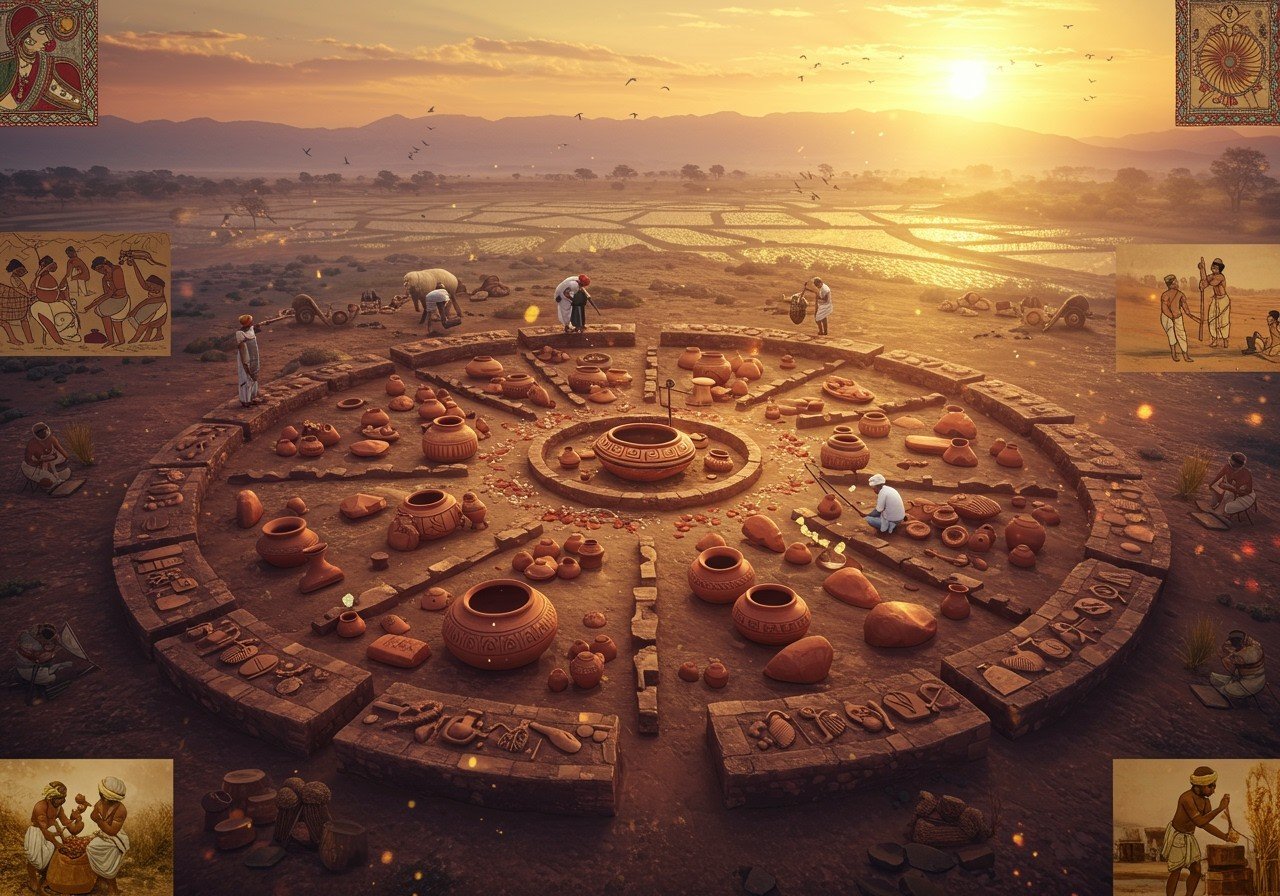
Nestled in the Belan Valley of Uttar Pradesh, Koldihwa stands as a testament to India’s rich historical and cultural tapestry. This ancient site holds immense archaeological significance, offering a glimpse into the lives of early agricultural communities. This blog delves into Koldihwa’s fascinating history, exploring its meaning, pronunciation, and the cultural heritage it embodies. We also touch upon its modern relevance and the ongoing efforts to preserve this invaluable piece of our past. For those seeking authentic traditional rituals and cultural experiences, understanding Koldihwa’s significance is crucial.
Understanding the Name: Koldihwa
The name “Koldihwa” itself carries historical weight. “Kol” refers to a tribe or community, and “Dihwa,” derived from “Diha,” signifies a village or settlement. Thus, Koldihwa translates to “village of the Kol tribe,” reflecting the site’s connection to the local communities. The correct pronunciation in Hindi is कोल्दिहवा (Kol-di-hwa), and understanding this allows us to connect more deeply with its cultural and historical context.
A Journey Through Time: Koldihwa’s Historical Significance
Koldihwa’s historical significance lies in its Neolithic roots. The site boasts archaeological remnants dating back to 7000-6000 BCE, including evidence of early rice cultivation, making it one of the oldest known sites of rice farming globally. This discovery revolutionized our understanding of early agricultural practices in the Indian subcontinent. Koldihwa showcases the transition from hunter-gatherer societies to settled agricultural communities, marking a pivotal moment in human history. The site’s importance is further amplified by the discovery of pottery fragments, microliths, and stone tools, which shed light on the technological advancements and lifestyles of the people who once inhabited this region.

Unearthing the Past: Archaeological Discoveries at Koldihwa
The archaeological findings at Koldihwa paint a vivid picture of early agrarian societies. The discovery of ancient pottery shards offers insights into their artistic expression and daily lives. Microliths, small stone tools, reveal the ingenuity and resourcefulness of these early inhabitants. Furthermore, the presence of early agricultural tools and evidence of rice cultivation provides valuable information about their farming techniques and the crops they cultivated. These discoveries are vital for comprehending the development of early agrarian societies in this region and their contribution to the broader history of human civilization.
Learn More About Ancient Rituals
Cultural Heritage and Traditions of Koldihwa
The cultural heritage of Koldihwa is deeply intertwined with the traditions of the local Kol tribe. This tribe has played a significant role in shaping the region’s cultural landscape. Their traditional practices, rituals, and knowledge systems have been passed down through generations, enriching the cultural fabric of the area. Preserving these traditions is essential for maintaining the Kol tribe’s cultural identity and ensuring the continuity of their unique heritage. Their contributions to the local economy, social structures, and artistic expressions are invaluable, reflecting the enduring legacy of their ancestors.
Explore Traditional Cultural Products
Koldihwa Today: Modern Relevance and Preservation Efforts
Today, Koldihwa serves as a vital center for local tourism and education. It provides a unique opportunity for people to connect with their roots and learn about ancient Indian history. Initiatives are underway to preserve the site’s archaeological treasures and cultural heritage for future generations. These efforts aim to promote cultural awareness, historical education, and a deeper appreciation for the past. Koldihwa continues to inspire and influence local traditions and practices, ensuring that the legacy of this ancient site lives on.

Discover Puja Essentials for Traditional Rituals
Frequently Asked Questions about Koldihwa
What is the meaning of Koldihwa? Koldihwa translates to \”village of the Kol tribe,\” reflecting its historical connection to the local community.
How is Koldihwa pronounced in Hindi? The correct pronunciation is कोल्दिहवा (Kol-di-hwa).
What is the historical significance of Koldihwa? Koldihwa is renowned as one of the earliest sites of rice cultivation globally, dating back to 7000-6000 BCE. It marks a crucial transition in human history, from hunter-gatherer societies to settled agricultural communities.
What kind of archaeological discoveries have been made at Koldihwa? Archaeologists have unearthed pottery fragments, microliths, stone tools, and evidence of early rice cultivation, providing insights into the daily lives and technological advancements of the site’s ancient inhabitants.
Conclusion: A Bridge to the Past
Koldihwa stands as a bridge connecting India’s rich past with the present. Its historical significance, archaeological discoveries, and cultural heritage offer invaluable insights into the development of early civilizations. By understanding, respecting, and preserving Koldihwa, we ensure that future generations can connect with and learn from this remarkable piece of our history. Let us continue to celebrate Koldihwa’s enduring legacy and its profound impact on shaping our cultural and historical landscape.


